What Is Demograohic Makeup Of The United States Military
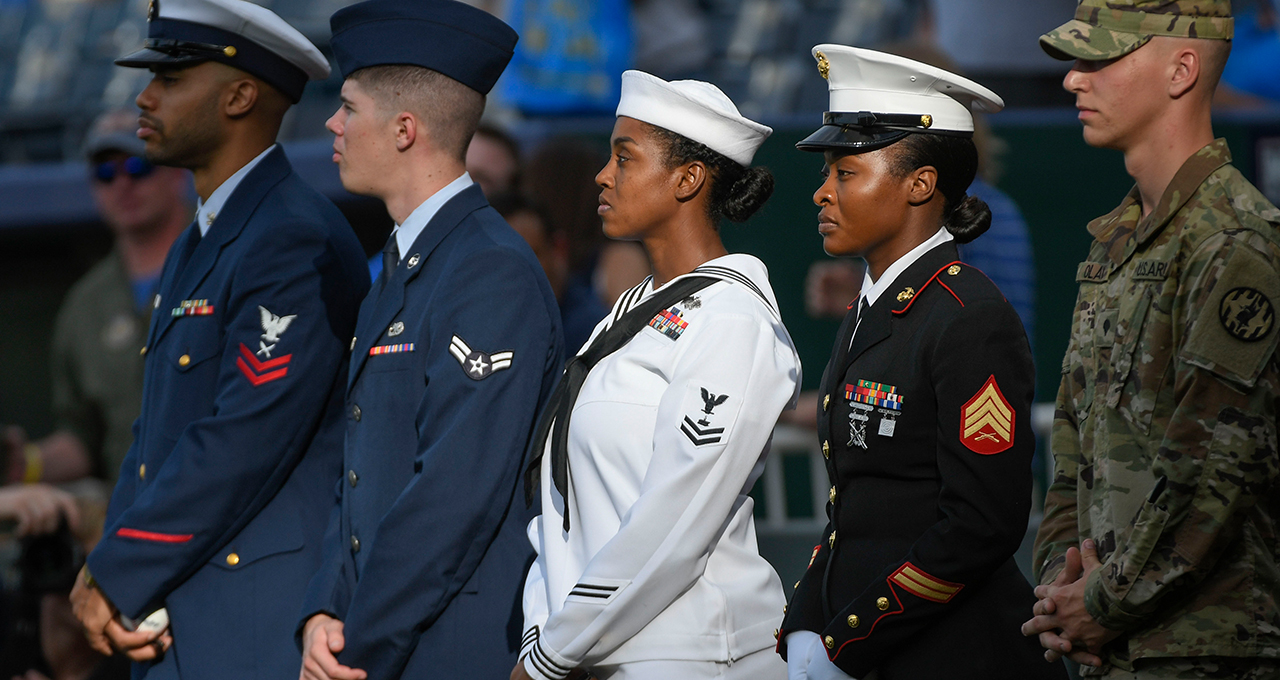
Today's active duty military is smaller and more racially and ethnically diverse than in previous generations. The gender dynamics also have changed over the class of the past l years, with more than women serving in the military – and as ranking officers – in 2017 than ever before.
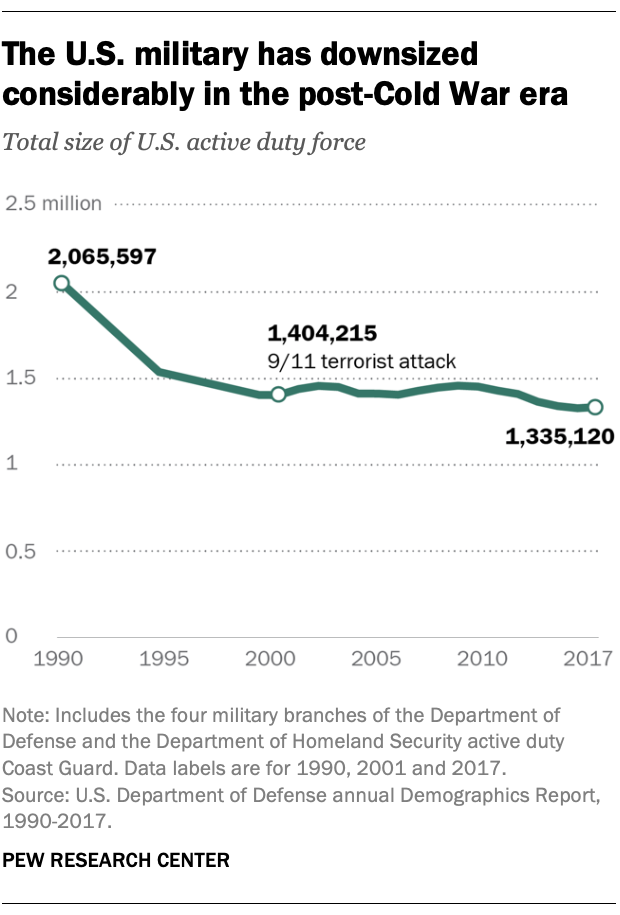
These demographic changes in the agile forces likewise have been reshaping the profile of the veteran population. (For more than, see our new report on veterans, "The American Veteran Experience and the Postal service-9/11 Generation.")
The overall size of the U.S. war machine has been on a downward trajectory for several decades. Some of the declines in military participation that followed the Cold War and Gulf War were halted with the 9/11 terrorist attacks. Later, conflicts in Iraq and Transitional islamic state of afghanistan increased the overall size of the military.
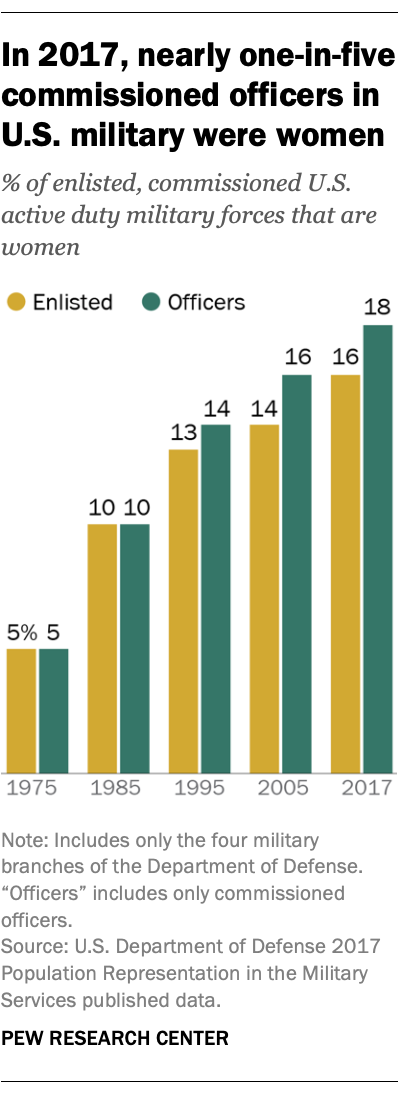
In 2017, there were roughly one.34 1000000 men and women serving on active duty. This number is down from a recent high of 1.46 million in 2010 and down substantially from more than 2 million active duty service members in 1990.
In 2017, women represented 16% of the overall agile duty force, up from 9% in 1980 and but i% in 1970.
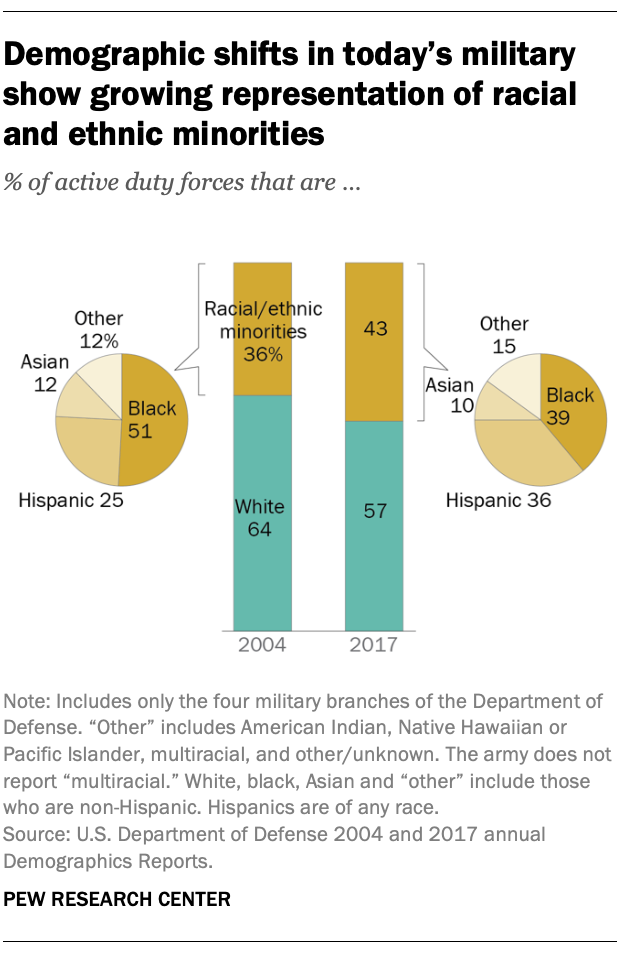
The percent of officers who are women has steadily grown since the 1970s. For example, in 1975, 5% of commissioned officers were women, and, by 2017, that share had risen to 18%.
A wait at the racial and ethnic profile of active duty service members shows that while the majority of the military is non-Hispanic white, black and Hispanic adults represent sizable and growing shares of the armed forces. In 2017, 57% of U.S. servicemembers were white, xvi% were blackness and 16% were Hispanic. Some 4% of all agile duty personnel were Asian and an additional 6% identified as "other" or unknown.
The share of racial and ethnic minorities in the military has grown steadily in contempo decades. Hispanics, in particular, are the fastest growing minority population in the armed services – a shift that aligns with larger demographic trends in the Usa.
In 2004, 36% of agile duty military machine were black, Hispanic, Asian or another racial or ethnic group. Black service members made upward nigh half of all racial and indigenous minorities at that fourth dimension.
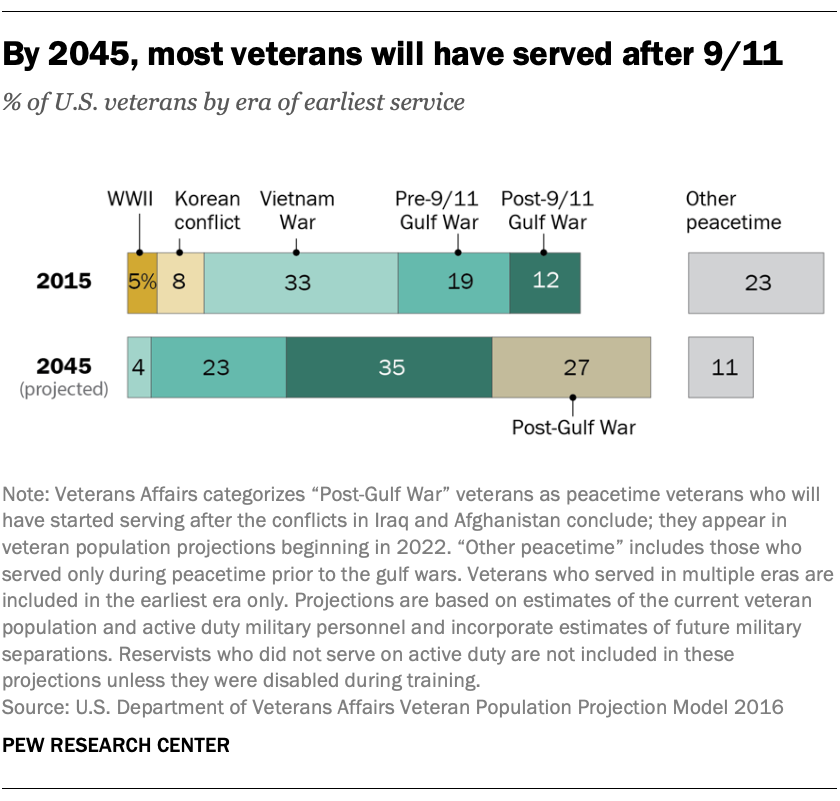
Past 2017, the share of agile duty military who were non-Hispanic white had fallen, while racial and ethnic minorities made upwardly 43% – and within that group, blacks dropped from 51% in 2004 to 39% in 2017 just as the share of Hispanics rose from 25% to 36%.
Today'southward military is comprised of service members who served during a broad range of eras, from World War Two to the post-ix/11 conflicts. But the share who served in pre-9/11 eras volition dwindle in time to come decades.
In 2015, the largest share of veterans kickoff served during the Vietnam era (33%). Projections from the Section of Veterans Affairs testify the waning influence of veterans from the Earth War 2, Korean State of war and Vietnam eras. By 2045, the largest share of living veterans will have first served in the mail-9/11 Gulf War era (35%).

Amanda Barroso is a former author/editor focusing on social trends at Pew Inquiry Center.
Source: https://www.pewresearch.org/fact-tank/2019/09/10/the-changing-profile-of-the-u-s-military/
Posted by: serranopentagess.blogspot.com

0 Response to "What Is Demograohic Makeup Of The United States Military"
Post a Comment